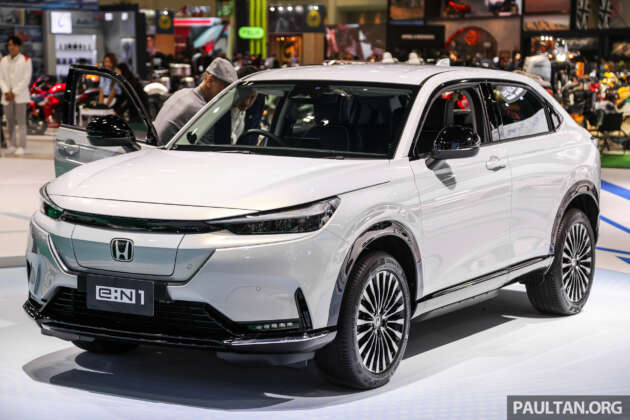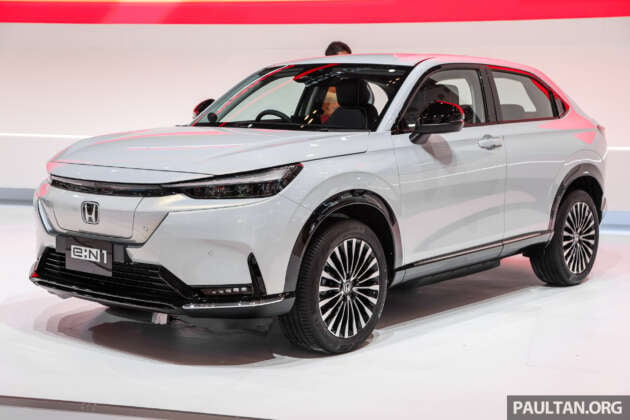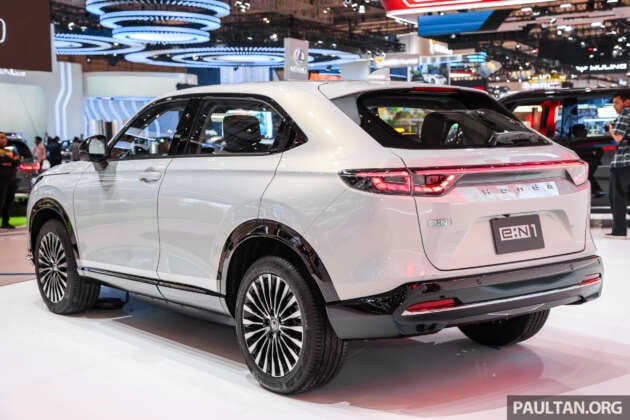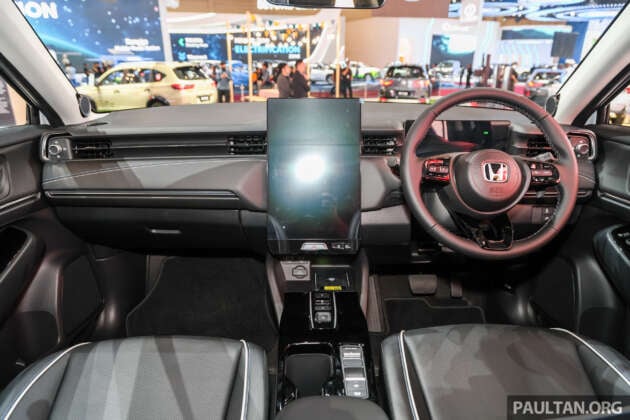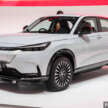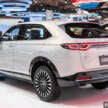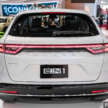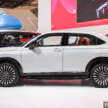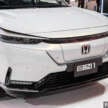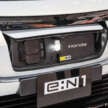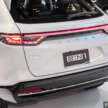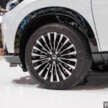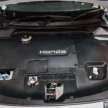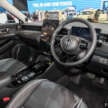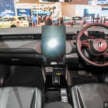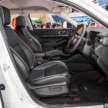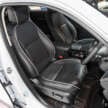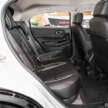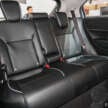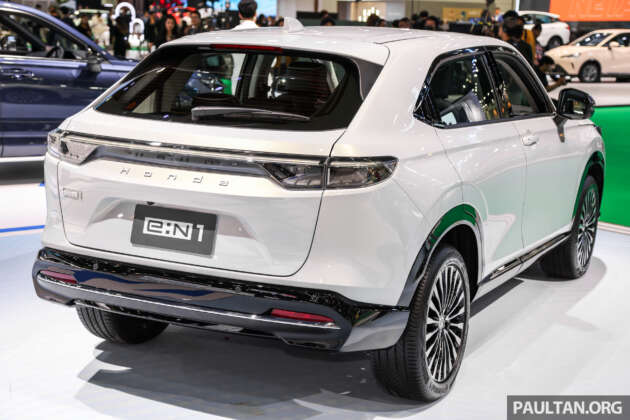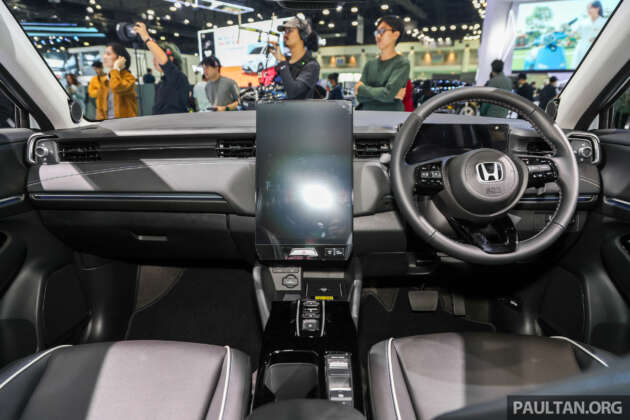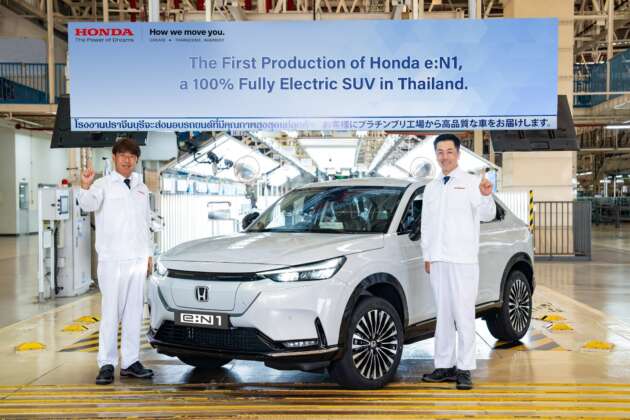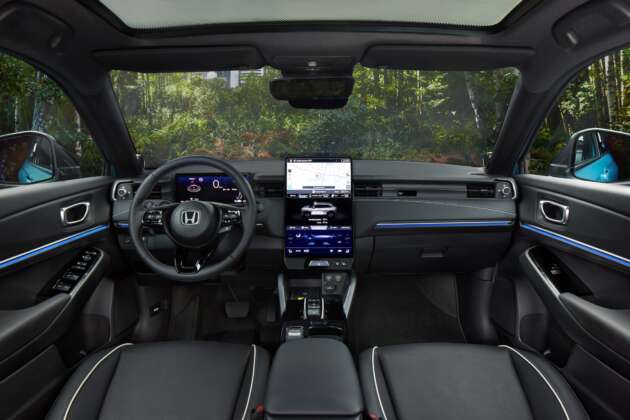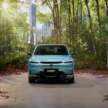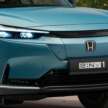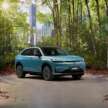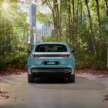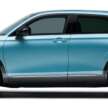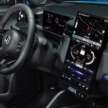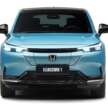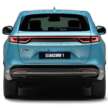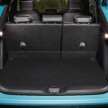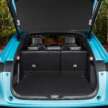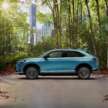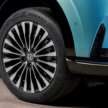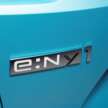
It’s tough being a legacy Japanese carmaker these days, what with a plethora of new models springing forth in every possible manner from Chinese players, swarming the market at speeds that sometimes defy belief. While the fight now looks to be expanding beyond pure electrification, much of the primary battleground remains in the new energy vehicle segment, and it is here that traditional players have had the hardest time.
UPDATE: The all-electric Honda e:N1 has been officially launched in Malaysia, priced at RM149,900. Read the launch report here.
This is certainly the case in Malaysia, where the sub-RM200k landscape is pretty much devoid of any EV that isn’t a Tesla, a MINI or something from China. Away from the rare Nissan Leaf facelift and even rarer Mazda MX-30, you’ll find nothing Japanese in that price segment. Toyota had the chance to step into the game with the bZ4X, but despite appearing here back in 2023, the EV never materialised as a retail offering, and it still hasn’t.
Enter the Honda e:N1. In a bid to increase that presence, Honda Malaysia is set to introduce its first all-electric offering into the local market. Does the electrified B-segment SUV have what it take to gain traction for the brand in the face of boundless Chinese competition? We sample the EV over a 400 km drive in Thailand to find out

Hey, isn’t that the HR-V?
The e:N1 is pretty much the e:Ny1 that was first announced in 2023 for the European market, the latter a rebadged global version of the e:NS1 that was sold in China. Nomenclature aside, this is very much an all-electric version of the third-gen HR-V exterior-wise, although a few easy-to-spot cues help identify it quickly, from the front through its shuttered nose and a restyled bumper and, from the rear, via a light bar strip connecting the rear light clusters and a scripted Honda mark on the tailgate.
The form is conservative, given how electric cars are expected to look in the space they’re playing in these days. Still, that’s not a bad thing, because the HR-V is a nice looking car, and there surely is a buying crowd to which this familiarity will feel reassuring, even if the stuff under the skin represents a step into a new frontier.
Unlike the regular HR-V, the car is underpinned by an e:N Architecture F front-wheel drive platform, one of the three the automaker has, with the W rear-wheel drive and W all-wheel drive being the other two. Elements in the platform’s technical spiel include a dedicated high rigidity body structure and a low centre of gravity, aided by the floor-mounted positioning of the battery pack.

Exterior equipment includes multi-spoke 18-inch two-tone alloys, auto on/off LED headlights with LED DRLs and front fog lamps, front LED sequential turn signals, a smoked LED tail light strip, rear LED combination lights, a rear spoiler and a shark fin antenna.
As for exterior colours, there was only one at point of introduction last year, and that was Premium Sunlight White Pearl. However, going the retail route in Thailand has introduced a second shade called Crystal Black Pearl, so we might see more than one colour coming our way.
Where will it be sourced from?
A quick aside before we head on further, and this is about where the e:N1 will be sourced from. The SUV will of course be imported, although the port of origin for the MY cars remains somewhat of a mystery, at least until it’s launched. Since it is assembled in Thailand, having gone the CKD path in the Kingdom at the end of 2023, you’d expect that the units we’ll be getting will be from there.
However, the latest communication about the examples that are now on sale in Thailand is that they will be CBU fully-imported units from China, assembled by Dongfeng Honda Automobile. This could have to do with the switch from leasing to retail. When the e:N1 was first marketed last year in Thailand, it was announced that it was not going to be sold in the market, but would only be available through a leasing programme from 12 car rental providers, with the leasing fee for it starting from 29,000 baht (RM3,800) a month.
Then, in March this year, it was announced that sales of the car would begin there. It could be that the decision to go retail may be requiring a volume that the dedicated factory line at Honda’s Prachinburi plant may not be able to cope with, especially with the car also set to go on sale here following the marketing switch in Thailand. In any case, we’ll find out soon enough.
Under the hood
The e:N1 is powered by a front-mounted three-in-one electric motor – which integrates the motor, power drive unit and gearbox – producing 204 PS (201 hp or 150 kW) and 310 Nm of torque from 0-4,621 rpm, with drive sent to the front wheels. Performance figures include a 0-100 km/h acceleration time of 7.7 seconds and a top speed of 160 km/h, as per the Thailand specification for it. This is unlikely to differ from what the MY car will offer.

The numbers aren’t blazing, but numbers don’t tell the whole story. Across the drive from Bangkok to Pattaya and back, the e:N1 felt energetic enough, without ever feeling short of pull even when driven sedately. Because it’s an EV, and because some buyers will demand it, some electric drive traits have remained penned in, such as the light-switch trait in power transfer to the wheels in Sport mode, one of three the car has. It’s definitely not the best way to drive the e:N1, but there’s enough pace, unless you’re expecting levels of Chinese warp drive push.
As my co-driver and I felt, leaving it on Eco mode served things up best, because both response to pedal input and progression is akin to what you would get with a regular propulsion unit, minus the engine noise, vibration and, most importantly, emissions. If the intent behind the throttle mapping and response is to provide buyers a behavioural familiarity in their transition from combustion to electrification, then it’s an ace move.
This approach won’t work for all, of course, because some will believe that new things should and must provide new – and thus different – experiences. Beyond the general immediacy an EV provides, the e:N1 won’t wow those expecting to be pressed to the back of the seat with each big pedal prod. For those who value cohesion, however, the car is a joy to drive.
A sophisticated ride
And to steer. In what is a case of neat integration, the ride and handling also exhibits traits the brand is familiar for – poise and control. The suspension tuning is quite a standout – the ride tips towards nuggety in terms of secondary rebound, but there’s no harshness about it, and the primary shows how good an EV can be when set up well. There’s none of the pitchy ride or “halves that sometimes don’t talk to each other” feel, and it was easy to forget how heavy it is, such was the seamless quality of the overall ride across the 400 km round trip.
Where its weight becomes evident is when you get it going into corners. At 1,662 kg, the e:N1 is nearly 270 kg heavier than the HR-V hybrid, and it’s here you can feel the mass, especially in faster switchbacks. Nonetheless, there’s no ragged behaviour and body control remains high. Collectively, everything gels very nicely, and the result is an EV that integrates everything into a neat, cohesive package, with a zero learning curve in driving approach.
Seat comfort from the black sports-design leather-clad units is decent, enough that 200 km at a go doesn’t feel a chore, but the front pews could probably do with a bit more plush. We didn’t get the chance to try out the back seats, but a small observation nonetheless – fans of the brand’s Ultra Seat will be disappointed to find that it has been omitted on this one due to the battery’s floor-mounted placement. As for boot space, there’s 344 litres to be had with the rear seats in place.
Of screens and other novelties
Much of the cabin is familiar from the HR-V, and while the dashboard follows the general scope of the latter, the flow of the centre console has been redesigned in order to house a large, vertically-oriented 15.1-inch Advanced Touch Display Audio touchscreen panel, and there’s a change to button switchgear for the drive controls. Additionally, the standard instrument panel has been replaced by a 10.25-inch TFT multi-information display, with the accompanying instrument cowl omitted on this one.
While the large central screen doesn’t flow visually with everything else, looking very much a pressed adaptation, there are no complaints in how it performs. Far from it, because the user interface is presented in a way many in the field can learn from (yes, we’re looking at you, Chinese carmakers).
Despite the omission of physical AC and audio control switchgear, the OS offsets this by grouping things in a logical manner, with access to key functions always available without the need to swipe or call them up screens later.

Three function zones sit within the display, the top part housing the infotainment section (navigation, audio, with Apple CarPlay and Android Auto present), while the central area contains that for vehicle-related settings. These two layers replicate the familiar single screen GUI on present Honda offerings.
The lowest and smallest section is where you’ll find the AC control capacitive display. Granted, there’s nothing faster than physical switchgear when it comes to quickly fine tuning the AC, but the fixed placement of the controls means that you can – with some continued use – operate it without having to take your eyes off the road beyond a very quick orientation glance.
Of juice, charging and safety
Energy for the e:N1’s motor is provided by a 96-cell 68.8 kWh nickel manganese cobalt (NMC) battery, with up to 412 km of WLTP-rated travel being touted by the automaker. The unit supports DC CCS2 charging at up to 78 kW, where it takes around 45 minutes to get it from a 10% to 80% state-of-charge. Meanwhile, charging at 11 kW AC will take six hours to fully juice up the pack.
Again, not numbers to shout home about, but the e:N1 is workable, especially for those with access to a home charger. In any case, the range in actual use is serviceable, with the drive from 200 km-plus run from Bangkok to Pattaya returning a 5.3 km per kWh (or 18.86 kWh/100 km) reading on the car’s computer, close enough to the 380 km approximation for a single charge as presented when starting out with the battery on a 98% state-of-charge.
In Pattaya, the cars were topped off through AC charging carried out at the hotel. The sampling run was made with one of the e:N1s via a 7.4 kW ABB Terra WC7 charger, with five and a half hours needed to juice up the unit to full from a 48% SoC.
A couple of things to note on this front, with the first being about the flap to access the charging port, which is located at the front end of the car. It’s mechanical, which simplifies things, but while opening it is an easy process (press a button, and done), closing it is a more tedious process, with the panel needing more than a few pushes to get the mechanism to lock it back in place.
Additionally, while the port’s placement tucks it away for a cleaner presentation and link-up (nose-in) to a charger, it also makes it susceptible to damage from a frontal mishap beyond a gentle bump.
The other is concerns the ground clearance, which has been reduced on the e:N1 to 142 mm from the 183 mm on the HR-V due to the addition of a battery protection case. While the clearance is slightly higher than that of the Civic, potential owners should be mindful of this facet when navigating through non-regulation speed humps, of which there are plenty about.
Safety-wise, the automaker’s Sensing suite brings along known staples such as road departure mitigation with lane departure warning, lane keeping assist, agile handling assist as well as adaptive cruise control with low speed follow. The suite also gets rear cross traffic alert and blind spot monitoring, the latter a marked improvement over the LaneWatch camera-based system.

How does it stack up?
In the current scheme of things, you get the feeling that ost of the crowd getting into the electrification segment are likely to bypass it in search of something that looks funkier and has more bells and whistles, because well, EVs have to be that way. That’s a shame, because while not the flashiest, it’s a solidly engineered product, one that drives well, with a high degree of resolution in areas that matter.
Ultimately though, its pricing will determine how it fares. Here, the e:N1 has its work cut out for it. In Thailand, it retails for 1.199 million baht (RM157,000), so we can expect it to sit somewhere just under the RM150k region.
Coming in at a time where retail prices are adjusted in response to the next competitor that shows up, it won’t be top-of-mind material, especially when you consider how the electric SUV field here is presently scoped. There will be adopters, of course, but you can tell this will be a niche product. Though the numbers shifted will likely be small, the e:N1 represents an important first step for the brand in its journey into electrification, one that will only really take shape when the 0 Series arrives in the near future.




















































































































































































































































